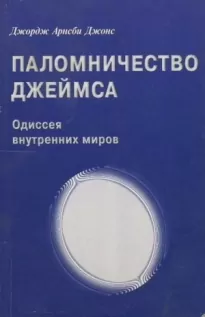Слепая физиология. Удивительная книга про зрение и слух

- Автор: Сьюзен Барри
- Жанр: Биология / Научная литература / Самиздат, сетевая литература
Читать книгу "Слепая физиология. Удивительная книга про зрение и слух"
125
C. Von Hofsten, “Predictive Reaching for Moving Objects by Human Infants,” Journal of Experimental Child Psychology 30 (1980): 369–382.
126
M. Dadarlat and M. P. Stryker, “Locomotion Enhances Neural Encoding of Visual Stimuli in Mouse V1,” Journal of Neuroscience 37 (2017): 3764–3775.
127
T. Bullock et al., “Acute Exercise Modulates Feature-Selective Responses in Human Cortex,” Journal of Cognitive Neuroscience 29 (2017): 605–618.
128
M. Kaneko, Y. Fu, and M. P. Stryker, “Locomotion Induces Stimulus-Specific Response Enhancement in Adult Visual Cortex,” Journal of Neuroscience 37 (2017): 3532–3543; M. Kaneko and M. P. Stryker, “Sensory Experience During Locomotion Promotes Recovery of Function in Adult Visual Cortex,” eLife (2014): 3e02798; C. Lunghi and A. Sale, “A Cycling Lane for Brain Rewiring,” Current Biology 25 (2015): R1122–R1123.
129
Ostrovsky et al., “Visual Parsing After Recovery from Blindness”; P. Sinha, “Once Blind and Now They See: Surgery in Blind Children from India Allows Them to See for the First Time and Reveals How Vision Works in the Brain,” Scientific American 309 (2013): 48–55.
130
E. Nawrot, S. I. Mayo, and M. Nawrot, “The Development of Depth Perception from Motion Parallax in Infancy,” Attention, Perception & Psychophysics 71 (2009): 194–199; E. Nawrot and M. Nawrot, “The Role of Eye Movements in Depth from Motion Parallax During Infancy,” Journal of Vision 13 (2013): 1–13.
131
J. J. Gibson, The Ecological Approach to Visual Perception (Hillsdale, NJ: Lawrence Erlbaum Associates, Publishers, 1986).
132
S. L. Strong et al., “Differential Processing of the Direction and Focus of Expansion of Optic Flow Stimuli in Areas MST and V3A of the Human Visual Cortex,” Journal of Neurophysiology 117 (2017): 2209–2217; R. H. Wurtz and C. J. Duffy, “Neural Correlates of Optic Flow Stimulation,” Annals of the New York Academy of Sciences 656 (1992): 205–219.
133
F. A. Miles, “The Neural Processing of 3-D Visual Information: Evidence from Eye Movements,” European Journal of Neuroscience 10 (1998): 811–822.
134
S. Hocken, Emma and I: The Beautiful Labrador Who Saved My Life (London: Ebury Press, 2011).
135
S. Holcomb and S. Eubanks, But Now I See: My Journey from Blindness to Olympic Gold (Dallas, TX: Benbella Books, Inc., 2013).
136
S. Hocken, Emma and I: The Beautiful Labrador Who Saved My Life (London: Ebury Press, 2011), 149.
137
J. McPhee, A Sense of Where You Are: A Profile of William Warren Bradley (New York: Farrar, Straus and Giroux, 1978), 22.
138
E. C. Tolman, “Cognitive Maps in Rats and Men,” Psychological Review 55 (1948): 180–208.
139
K. Lorenz, Here Am I – Where Are You?: The Behavior of the Greylag Goose (New York: Harcourt Brace Jovanovich, 1988), 18–20.
140
О том, что навыки ориентирования в пространстве не зависят от зрения см. R. L. Klatsky et al., “Performance of Blind and Sighted Persons on Spatial Tasks,” Journal of Visual Impairment & Blindness 89 (1995): 70–82.
141
R. M. Grieve and K. J. Jeffery, “The Representation of Space in the Brain,” Behavioural Processes 135 (2017): 113–131; C. G. Kentros et al., “Increased Attention to Spatial Context Increases Both Place Field Stability and Spatial Memory,” Neuron 42 (2004): 283–295; J. O’Keefe, and L. Nadel, The Hippocampus as a Cognitive Map (Oxford: Oxford University Press, 1978).
142
M. E. Arteberry and P. J. Kellman, Development of Perception in Infancy: The Cradle of Knowledge Revisited (New York: Oxford University Press, 2016); M. Arterberry, A. Yonas, and A. S. Bensen, “Self-Produced Locomotion and the Development of Responsiveness to Linear Perspective and Texture Gradients,” Developmental Psychology 25 (1989): 976–982; M. Kavsek, A. Yonas, and C. E. Granrud, “Infants’ Sensitivity to Pictorial Depth Cues: A Review and Meta-analysis of Looking Studies,” Infant Behavior and Development 35 (2012): 109–128; A. Tsuruhara et al., “The Development of the Ability of Infants to Utilize Static Cues to Create and Access Representations of Object Shape,” Journal of Vision 10 (2010), doi:10.1167/10.12.2; A. Yonas and C. E. Granrud, “Infants’ Perception of Depth from Cast Shadows,” Perception & Psychophysics 68 (2006): 154–160.
143
J. J. Gibson, The Ecological Approach to Visual Perception (Hillsdale, NJ: Lawrence Erlbaum Associates Publishers, 1986).
144
Gibson, The Ecological Approach to Visual Perception.
145
Любопытно, что иллюзия Понцо обманула и пациентов проекта Пракаш всего через 48 часов после операции на удаление катаракты, которая подарила им зрение. Для них серые линии выглядели одинаковыми: as different sizes: T. Gandhi et al., “Immediate Susceptibility to Visual Illusions After Sight Onset,” Current Biology 25 (2015): R345–R361.
146
O. Sacks, “To See and Not See,” in An Anthropologist on Mars: Seven Paradoxical Tales (New York: Alfred A. Knopf, 1995), 120–121.
147
V. S. Ramachandran, “Perceiving Shape from Shading,” Scientific American 259 (1988): 76–83.
148
M. Von Senden, Space and Sight: The Perception of Space and Shape in the Congenitally Blind Before and After Operation (Glencoe, IL: Free Press, 1960).
149
Arteberry and Kellman, Development of Perception in Infancy; Arterberry, Yonas, and Bensen, “Self-Produced Locomotion”; Kavsek, Yonas, and Granrud, “Infants’ Sensitivity to Pictorial Depth Cues”; Tsuruhara et al., “The Development of the Ability of Infants to Utilize Static Cues”; Yonas and Granrud, “Infants’ Perception of Depth from Cast Shadows.”
150
Эта цитата приписывается Хелен Келлер, но ее источник точно не установлен. Впрочем, Келлер иногда высказывала похожую идею. Например, в книге Helen Keller in Scotland: A Personal Record Written by Herself, ed. James Kerr Love (London: Methuen & Co., 1933) она писала: «Проблемы глухоты намного глубже и сложнее, нежели проблемы слепоты, а может быть и важнее. Глухота – намного большее несчастье, ибо она означает потерю самого жизненно важного – звука голоса, который несет с собой речь, приводит нашу мысль в движение и помогает нам оставаться в интеллектуальном сообществе людей». См. “FAQ: Deaf People in History: Quotes by Helen Keller,” Gallaudet University, http://libguides.gallaudet.edu/c.php?g=773975&p=5552566.
151
D. Wright, Deafness: An Autobiography (New York: Harper Perennial, 1993).
152
H. Keller, The Story of My Life: The Restored Edition, ed. J. Berger (New York: Modern Library, 2004).
153
S. Schaller, A Man Without Words (Berkeley: University of California Press, 1991).
154
M. Chorost, Rebuilt: How Becoming Part Computer Made Me More Human (New York: Houghton Mifflin, 2005), 31.
155
L. Vygotsky, Thought and Language, ed. Alex Kozulin (Cambridge, MA: MIT Press, 1986).
156
J. Bruner, Child’s Talk (New York: W. W. Norton & Co., Inc., 1983).
157
O. Sacks, Seeing Voices: A Journey into the World of the Deaf (Berkeley: University of California Press, 1989).
158
H. Keller, The Story of My Life: The Restored Edition, ed. J. Berger (New York: Modern Library, 2004), 262.
159
J. Rosner, If a Tree Falls: A Family’s Quest to Hear and Be Heard (New York: Feminist Press, 2010), 65.
160
H. Keller, The Story of My Life: The Restored Edition, ed. J. Berger (New York: Modern Library, 2004).
161
H. Keller, The Story of My Life: The Restored Edition, ed. J. Berger (New York: Modern Library, 2004).49.
162
S. Hochstein and M. Ahissar, “View from the Top: Hierarchies and Reverse Hierarchies in the Visual System,” Neuron 36 (2002): 791–804.
163
B. S. Wilson and M. F. Dorman, “Cochlear Implants: A Remarkable Past and a Brilliant Future,” Hearing Research 242 (2008): 3–21; A. A. Eshraghi et al., “The Cochlear Implant: Historical Aspects and Future Prospects,” Anatomical Record 295 (2012): 1967–1980.
164
Wilson and Dorman, “Cochlear Implants”; Eshraghi et al., “The Cochlear Implant”; W. F. House, The Struggles of a Medical Innovator: Cochlear Implants and Other Ear Surgeries (William F. House, DDS, MD, 2011).
165
House, The Struggles of a Medical Innovator.
166
Wilson and Dorman, “Cochlear Implants”; Eshraghi et al., “The Cochlear Implant.”
167
House, The Struggles of a Medical Innovator; G. Clark, Sounds from Silence: Graeme Clark and the Bionic Ear Story (Crows Nest NSW, Australia: Allen and Unwin, 2000).
168
Wilson and Dorman, “Cochlear Implants.”
169
Wilson and Dorman, “Cochlear Implants”; Eshraghi et al., “The Cochlear Implant”; R. C. Bilger and F. O. Black, “Auditory Prostheses in Perspective,” Annals of Otology, Rhinology, and Laryngology 86, no. 3 (suppl) (May 1977): 3–10, doi:10.1177/00034894770860S301.
170
House, The Struggles of a Medical Innovator; B. Biderman, Wired for Sound: A Journey into Hearing, rev. ed. (Toronto: Journey into Hearing Press, 2016); Lane, The Mask of Benevolence: Disabling the Deaf Community (New York: Knopf, 1992)
171
O. Sacks, Seeing Voices: A Journey into the World of the Deaf (Berkeley: University of California Press, 1989); D. Wright, Deafness: An Autobiography (New York: Harper Perennial, 1993).
172
Biderman, Wired for Sound; Lane, The Mask of Benevolence.
173
Clark, Sounds from Silence.
174
Майкл Хорост прекрасно описывает, как работает кохлеарный имплантат, в своей книге: Rebuilt: How Becoming Part Computer Made Me More Human (New York: Houghton Mifflin, 2005).
175
O. Sacks, “To See and Not See,” in An Anthropologist on Mars: Seven Paradoxical Tales (New York: Alfred A. Knopf, 1995).
176
M. E. Arterberry and P. J. Kellman, Development of Perception in Infancy: The Cradle of Knowledge Revisited (New York: Oxford University Press, 2016).
177
D. Maurer, L. C. Gibson, and F. Spector, “Infant Synaesthesia: New Insights into the Development of Multisensory Perception,” in Multisensory Development, ed. A. J. Bremner, D. J. Lewkowicz, and C. Spence (Oxford: Oxford University Press, 2012).
178
A. Damasio, Descartes’ Error: Emotion, Reason, and the Human Brain (New York: Penguin Books, 1994), (курсив оригинала).
179
J. J. Gibson, The Ecological Approach to Visual Perception (Hillsdale, NJ: Lawrence Erlbaum Associates, Inc., 1986), 116.
180
J. M. Hull, Touching the Rock: An Experience of Blindness (New York: Pantheon Books, 1990), 82.
181
J. Rosner, If a Tree Falls: A Family’s Quest to Hear and Be Heard (New York: Feminist Press, 2010).
182
J. Schnupp, I. Nelken, and A. J. King, Auditory Neuroscience: Making Sense of Sound (Cambridge, MA: MIT Press, 2012).
183
G. Chechik and I. Nelken, “Auditory Abstraction from Spectro-temporal Features to Coding Auditory Entities,” Proceedings of the National Academy of Sciences 109 (2012): 18968–18973; L. J. Press, Parallels Between Auditory and Visual Processing (Santa Ana, CA: Optometric Extension Program Foundation Inc., 2012).
184
A. R. Luria, The Working Brain: An Introduction to Neuropsychology (New York: Basic Books, 1973).
185
A. Bregman, Auditory Scene Analysis: The Perceptual Organization of Sound (Cambridge, MA: MIT Press, 1990).
186
Schnupp, Nelken, and King, Auditory Neuroscience; Bregman, Auditory Scene Analysis.
187
M. Ahissar et al., “Reverse Hierarchies and Sensory Learning,” Philosophical Transactions of the Royal Society B 364 (2009): 285–299; M. Nahun, Nelken, and M. Ahissar, “Stimulus Uncertainty and Perceptual Learning: Similar Principles Govern Auditory and Visual Learning,” Vision Research 50 (2010): 391–401.
188
Другие люди, впервые получившие кохлеарный имплантат, также отмечали новые для них звуки – вой ветра, хруст чипсов или звуки, с которыми предметы падают на пол. B. Biderman, Wired for Sound: A Journey into Hearing, rev. ed. (Toronto: Journey into Hearing Press, 2016); A. Romoff, Hear Again: Back to Life with a Cochlear Implant (New York: League for the Hard of Hearing, 1999).
189
A. Storr, Music and the Mind (New York: Free Press, 1992).
190
M. W. Kraus, “Voice-Only Communication Enhances Empathic Accuracy,” American Psychologist 72 (2017): 644–654; J. Zaki, N. Bolger, and K. Ochsner, “Unpacking the Informational Bases of Empathic Accuracy,” Emotion 9 (2009): 478–487.
191
M. D. Pell et al., “Preferential Decoding of Emotion from Human Non-linguistic Vocalizations Versus Speech Prosody,” Biological Psychology 111 (2015): 14–25.
192
S. Horowitz, The Universal Sense: How Hearing Shapes the Mind (New York: Bloomsbury, 2013).
193
S. Manninen et al., “Social Laughter Triggers Endogenous Opioid Release in Humans,” Journal of Neuroscience 37 (2017): 6125–6131.
194
G. Concina et al., “The Auditory Cortex and the Emotional Valence of Sounds,” Neuroscience and Biobehavioral Reviews 98 (2019): 256–264.
195
J. Schnupp, I. Nelken, and A. J. King, Auditory Neuroscience: Making Sense of Sound (Cambridge, MA: MIT Press, 2012).
196
A. Romoff, Hear Again: Back to Life with a Cochlear Implant (New York: League for the Hard of Hearing, 1999).
197
Schnupp, Nelken, and King, Auditory Neuroscience.
198
Romoff, Hear Again.
199
J. J. Gibson, The Ecological Approach to Visual Perception (Hillsdale, NJ: Lawrence Erlbaum Associates, Publishers, 1986).
200
D. Wright, Deafness: An Autobiography (New York: Harper Perennial, 1993).
201
M. Chorost, Rebuilt: How Becoming Part Computer Made Me More Human (New York: Houghton Mifflin, 2005), 90–91.
202
Wright, Deafness.
203
W. T. Gallwey, The Inner Game of Tennis: The Classic Guide to the Mental State of Peak Performance (New York: Random House, 1997).
204
T. J. Rogers, B. L. Alderman, and D. M. Landers, “Effects of Life-Event Stress and Hardiness on Peripheral Vision in a Real-Life Stress Situation,” Behavioral Medicine 29 (2003): 21–26.
205
Romoff, Hear Again.
206
L. Vygotsky, Thought and Language (Cambridge, MA: MIT Press, 1986).
207
D. Wright, Deafness: An Autobiography (New York: Harper Perennial, 1993).
208
R. Arnheim, Visual Thinking (Berkeley: University of California Press, 1969).
209
B. Tversky, Mind in Motion: How Action Shapes Thought (New York: Basic Books, 2019).
210
M. Schafer and D. Schiller, “In Search of the Brain’s Social Road Maps,” Scientific American 322 (2020): 30–35.





